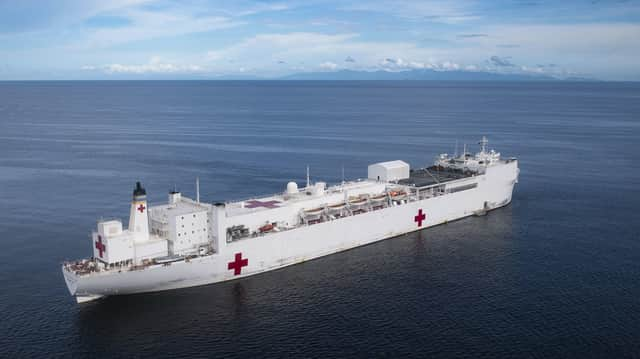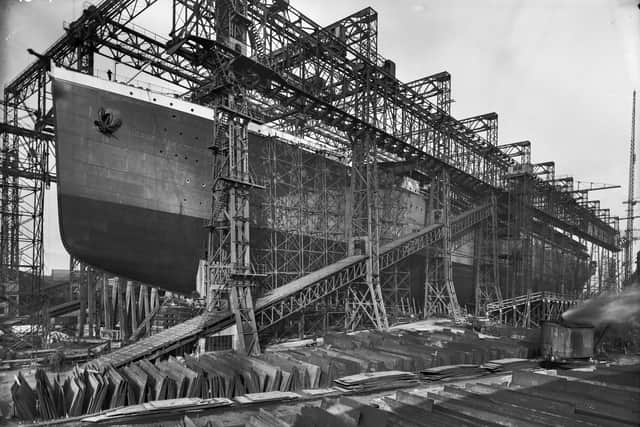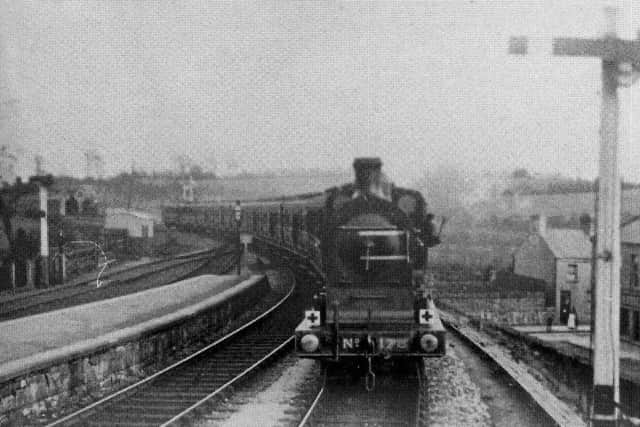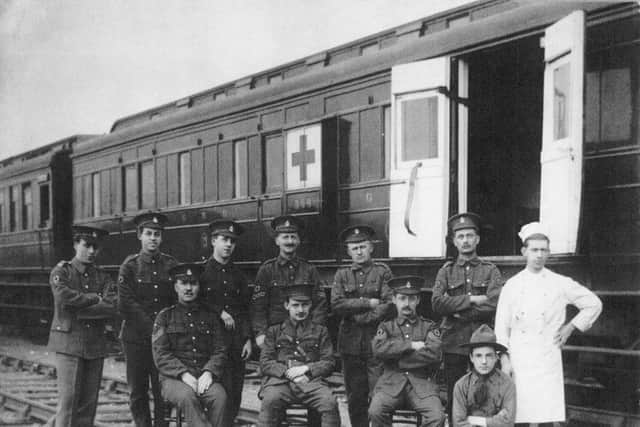What we did so well in the past is being done again for this fight


Following the recent deployment of the US Navy’s hospital ships Comfort and Mercy to combat the coronavirus crisis in America and with France’s TGVs (Train à Grande Vitesse - ‘high-speed trains’) currently being used as hospital trains, it’s curiously comforting to know that it has all been done before, here in Northern Ireland! History’s most famous and biggest hospital ship of its era was built in Belfast - Titanic’s sister ship HMHS Britannic - and Ireland once boasted a remarkable local network of hospital trains.
His Majesty’s Hospital Ship Britannic was historic and heroic, with half a dozen voyages during the Great War carrying many thousands of wounded soldiers before being sunk by a German mine off the Greek island of Kea in November 1916.
Advertisement
Hide AdAdvertisement
Hide AdAnd many thousands more of WWI’s front-line casualties, brought home to Ireland by ship, were transported by train to hospitals nearer their hometowns, townlands and villages.


Our wartime hospital trains were a great deal slower than their modern counterparts in Paris, but they were well kitted out with fully-staffed wards, pharmacies, operating theatres and kitchen facilities.
More about the trains in a moment, but first HMHS Britannic which was requisitioned before completion, and converted into a hospital ship at her fitting-out wharf on the River Lagan.
Britannic had facilities for over 3,000 hospital beds for wounded soldiers with senior medical staff, officers, doctors and senior registered nurses accommodated in First Class.
Advertisement
Hide AdAdvertisement
Hide AdThe enormous First Class Dining Room was an Intensive Care Unit with an adjoining Reception Lounge converted into a fully equipped operating theatre.


Britannic was well staffed and resourced medically - around 50 surgeons and doctors, 100 nurses, 350 orderlies and a huge store of medicines, pharmaceuticals and surgical equipment.
Over in New York today, the US Navy’s hospital ship Comfort has 1,000 beds, a dental clinic, four x-ray machines and a CT scanner.
Comfort also has two oxygen-producing plants and a fresh water plant that can produce up to 300,000 gallons of water a day.
Advertisement
Hide AdAdvertisement
Hide AdOn the Feast of Our Lady on 21 November 1916, just after HMHS Britannic’s padre had completed Mass the Belfast-built hospital ship rammed a German mine.


Local folk sped out from Kea in fishing boats to rescue the sinking vessel’s 1,036 doctors, nurses and crew.
Fortunately, there were very few patients on board as she was between trips.
Two lifeboats, sucked into the ship’s fast-churning propellers, were instantly chopped apart like matchsticks.
Advertisement
Hide AdAdvertisement
Hide AdMost of the 28 passengers in the lifeboats died but the rest of ship’s sailors and medical staff were unscathed.
Since last week, France has been shuttling patients in its TGV high-speed trains from places where the coronavirus outbreak has overwhelmed hospitals to places and regions in the country where the hospitals are less strained.
The TGVs carry patients in stretchers placed on seat tops with oxygen cylinders on the luggage racks.
There are around six medical staff in each compartment and even though the trains travel at very high speeds they’re accelerated and decelerated extremely smoothly.
Advertisement
Hide AdAdvertisement
Hide AdThe doctors and nurses are therefore able to carry out the same kind of delicate procedures that they would do in an ordinary hospital.
Around two years ago railway historian Charles Friel shared his research on this page about the ambulance trains which ran in Ireland during WWI.
There were two of them - fully-staffed, self-contained ‘hospitals on wheels’ - each with the facilities and resources of any small hospital.
They were used to transport wounded soldiers to hospitals nearer their homes, all over Ireland where there were train connections.
Advertisement
Hide AdAdvertisement
Hide AdNumber 13 Ambulance Train was based in the goods yard at Adelaide in south Belfast and Number14 was run by the Great Southern and Western Railway company.
Number 13’s nine carriages included a pharmacy and operating theatre and five of the adapted carriages could accommodate 100 soldiers on stretchers - four officers and 96 other ranks.
It also had a dining car and overnight accommodation for 25 staff from the Royal Army Medical Corps (RAMC).
As well as two Medical Officers, two nursing sisters and 18 nursing orderlies, there was a cook, a cook’s orderly and a compounder.
Advertisement
Hide AdAdvertisement
Hide AdMr Friel reckoned that Number 13 carried a total of 5,300 casualties “which could mean about 50 separate round trips from Belfast to a port like Dublin’s North Wall” Charles calculated.
The casualties were then brought to a hospital near their home depot.
Mr Friel identified some 55 separate ambulance train movements here during the Great War, 31 of them by Great Northern’s Number 13 train and 16 by its Great Southern and Western Railway counterpart, Number14.
The latter brought men to hospitals at the Curragh and in Cork - and it visited Belfast on three occasions to supplement the Great Northern train.
Advertisement
Hide AdAdvertisement
Hide AdThe Great Northern train brought casualties principally to Belfast, sometimes leaving men off at Drogheda, Portadown and Lisburn.
It also went to Ballymena twice, to Omagh at least twice, once to Londonderry (Foyle Road) and probably to Armagh as well.
A message from the Editor:
Thank you for reading this story on our website. While I have your attention, I also have an important request to make of you.
In order for us to continue to provide high quality and trusted local news on this free-to-read site, I am asking you to also please purchase a copy of our newspaper whenever you are able to do so.
Advertisement
Hide AdAdvertisement
Hide AdOur journalists are highly trained and our content is independently regulated by IPSO to some of the most rigorous standards in the world. But being your eyes and ears comes at a price. So we need your support more than ever to buy our newspapers during this crisis.
With the coronavirus lockdown having a major impact on many of our local valued advertisers - and consequently the advertising that we receive - we are more reliant than ever on you helping us to provide you with news and information by buying a copy of our newspaper when you can safely.
You can also enjoy unlimited access to the best news from across Northern Ireland and the UK by subscribing to newsletter.co.uk
With a digital subscription, you can read more than five articles, see fewer ads, enjoy faster load times, and get access to exclusive newsletters and content. Visit https://www.newsletter.co.uk/subscriptions now to sign up.
Thank you